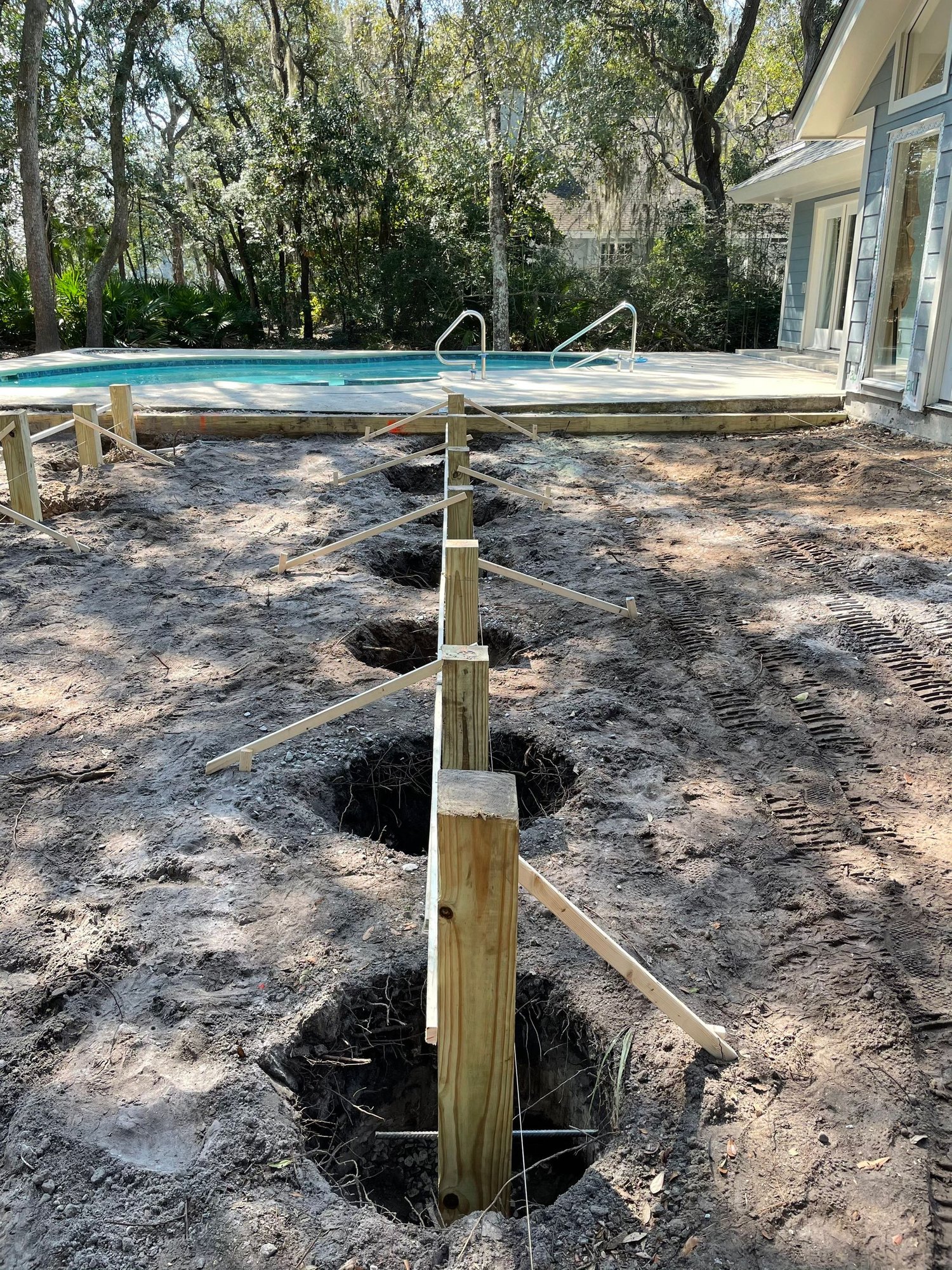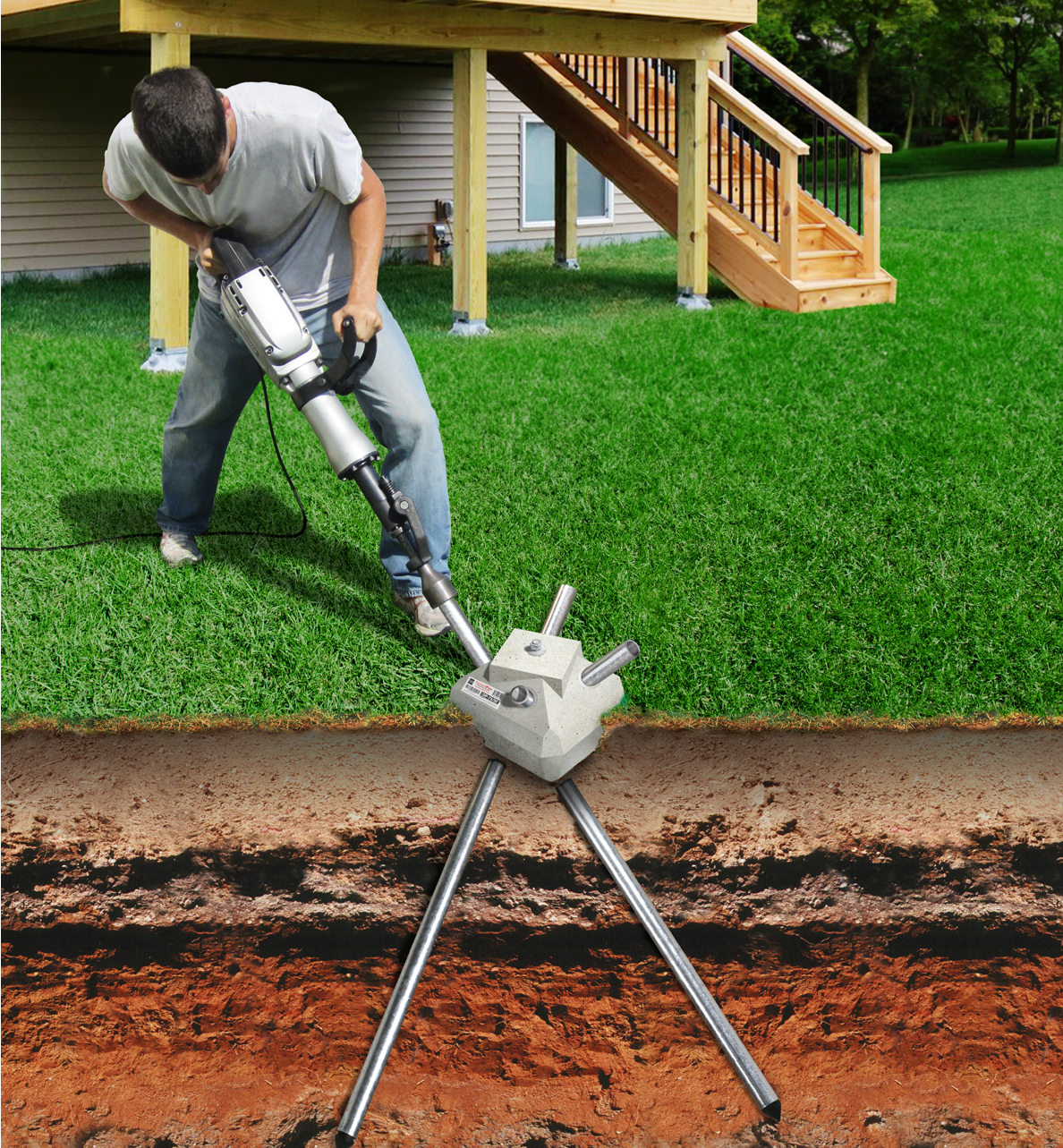Professional Tips for Setting Up Deck Footings to Support Your Outdoor Room
When it comes to building a deck, one of the most vital components to take into consideration is the installment of correct grounds. These grounds are the foundation upon which your exterior room will relax, offering security and support for years to come. What precisely does it take to set up deck grounds correctly?
Importance of Proper Deck Grounds
Correct deck grounds are necessary for making certain the security and longevity of your outdoor room. When creating a deck, it is vital to focus on the foundation on which it will certainly rest. Deck grounds offer the required support for the whole structure and aid disperse the weight evenly - Deck Footings. Without strong and properly set up footings, your deck might end up being unstable, leading to safety and security dangers and expensive fixings.

In enhancement to security, proper deck grounds additionally add to the durability of your outside room (Deck Footings). Footings that are designed and created to stand up to the aspects and dirt conditions in your area will aid avoid the deck from shifting or clearing up with time. By guaranteeing the grounds are properly sized and installed, you can decrease the threat of damages to the deck structure, extending its lifespan and decreasing the demand for costly repair work or substitutes

Choosing the Right Sort Of Grounds
When choosing the appropriate type of footings for your deck, it is very important to take into consideration factors such as dirt conditions, neighborhood building ordinance, and the general design of your exterior space. The kind of footing you select will certainly play a crucial function in guaranteeing the stability and longevity of your deck.
One typical kind of ground is the concrete footing. Concrete footings appropriate for a lot of soil conditions and supply superb assistance for decks. They are normally installed below the frost line to prevent moving and settling because of freezing and thawing cycles. Another option is helical piers, which are optimal for areas with unpredictable soil or high water tables. These piers are screwed into the ground and offer strong support for the deck.
Sometimes, you might require to make use of specialized footings, such as stack grounds or deep structures, if you are developing a multi-level or big deck. These grounds are created to distribute the weight of the deck over a larger area, ensuring stability and preventing settling or sinking.
Prior to picking a kind of ground, it is necessary to seek advice from neighborhood building regulations and regulations to make sure compliance. Furthermore, take into consideration the style and intended use your outside space. Factors such as the dimension, shape, and load-bearing needs of your deck will affect the sort of footing that is most ideal.
Preparing the Ground for Footing Setup
To correctly prepare the ground for footing setup, it is essential to evaluate the soil problems and take essential actions to make sure stability and sturdiness of the deck. The primary step is to dig deep into the location where the footings will certainly be set up. The deepness of the excavation will certainly depend upon the frost line in your region and the specific needs of the deck design. It is vital to get rid of any plant life, rocks, or debris from the excavation to make sure a solid foundation.
When the location has actually been excavated, the next action is to portable the dirt. This can be done making use of a plate compactor or by utilizing a hand tamper. Condensing the soil aids to eliminate any type of spaces or air pockets, which can lead to working out and instability gradually.
After condensing the soil, it is vital to lay a layer of gravel or crushed rock at the base of the excavation. This will give drain and aid to avoid water from merging around the footings, which can bring about disintegration and instability.
Step-by-Step Overview to Putting Up Deck Footings
After appropriately preparing the ground for footing setup, the following step is to start the process of setting up deck footings. This detailed overview will provide you with a clear understanding of just how to set up deck grounds for your outdoor room.
Establish the place: Beginning by noting the positions of the deck footings using risks and string. Make certain that the locations straighten with the layout and design of your deck.
Dig the holes: Make use of a message hole digger or an auger to dig the holes for the grounds. The deepness and diameter of the holes must remain in conformity with neighborhood building regulations and the certain requirements of your deck visit their website design.
Level the openings: Use a degree to make sure that the openings are dug to the appropriate depth and are degree with each other. (Deck Footings)
Add crushed rock: Place a layer of crushed rock at the bottom of each hole to boost see post water drainage and prevent the wood from deteriorating.
Place the footings: Position the grounds into the holes, making certain they are degree and plumb. Make use of a degree and a measuring tape to ensure precision.
Safeguard the grounds: Put concrete into the openings around the footings, filling them to the top. Use a message level to make sure the grounds stay level as the concrete collections.
Allow time for healing: Let the concrete remedy according to the manufacturer's instructions before proceeding with the deck building and construction.
Usual Blunders to Stay Clear Of Throughout Footing Installation
One vital element to take into consideration during the installation of deck footings is staying clear of common mistakes that can endanger the stability and long life of your exterior area. While deck grounds might appear like a straightforward and simple component of the building and construction process, forgeting certain aspects can result in expensive repairs and possible safety risks down the line.

Furthermore, ignoring to set up correct drainage steps can cause water to accumulate around the footings, leading to rot, decay, and the eventual weakening of the deck's foundation. Using the wrong type of footing product or failing to adequately safeguard the footings can endanger their structural integrity.
To avoid these errors, it is important to speak with a professional or adhere to industry standards to ensure correct ground installation. By doing so, you can guarantee the security and durability of your exterior room, supplying a secure and satisfying atmosphere for many years to find.
Conclusion
Finally, setting up correct deck footings is critical for the stability and durability of your exterior space. By choosing the ideal kind of footings and properly preparing the ground, you can make certain a solid foundation for your deck. Following a detailed guide and preventing typical mistakes throughout footing installment will additionally article enhance the resilience and security of your deck.
Correct deck footings are essential for ensuring the security and longevity of your exterior area. The footings serve as a link in between the ground and the deck, enabling the weight of the deck and its passengers to be dispersed equally right into the soil.One common kind of footing is the concrete footing. Insert the footings: Put the footings into the holes, making sure they are level and plumb. Safeguard the footings: Pour concrete right into the holes around the grounds, filling them to the top.